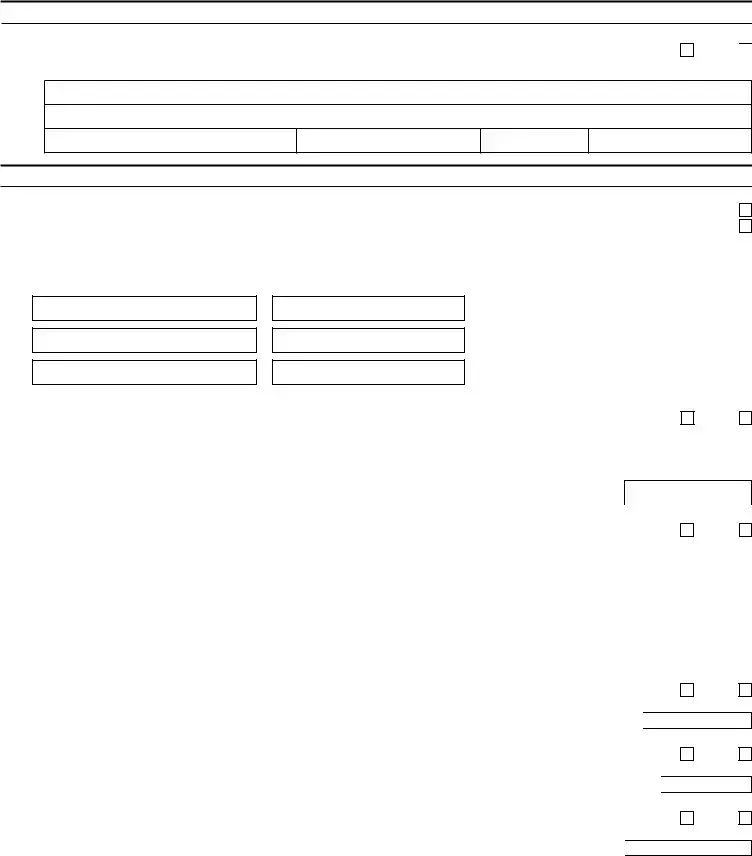The Form SS-4, Application for Employer Identification Number (EIN), provided by the Internal Revenue Service, is similar to the NYS DTF-17 form because it is also an initial registration form that businesses need to fill out. Both forms require detailed information about the business, such as the legal name, physical and mailing addresses, type of entity, and identification numbers. The Form SS-4 primarily focuses on obtaining a federal EIN, which is necessary for tax filing and reporting at the federal level, akin to how the DTF-17 form is used to register for sales tax purposes at the state level.
Form W-9, Request for Taxpayer Identification Number and Certification, shares similarities with the DTF-17 because both documents collect taxpayer identification information, such as the business’s name and EIN or Social Security Number. While Form W-9 is used to provide a taxpayer identification number to entities that will pay you, thereby ensuring accurate reporting to the IRS, the DTF-17 is used to register a business with the NYS Department of Taxation and Finance for sales tax purposes. Both forms are critical in the proper management and identification of a business’s tax liabilities and responsibilities.
The Business License Application form, often used by cities or states, resembles the DTF-17 form in its purpose to register a business for regulatory compliance. Both forms collect detailed information about the business, including its name, location, and type of business activity. The primary difference lies in their scope; while the DTF-17 is specific to sales tax registration in New York State, a general Business License Application can cover a range of compliance areas from zoning to health and safety regulations, depending on the jurisdiction.
The UC-1, Unemployment Compensation Registration form, used by state departments to register businesses for state unemployment contributions, is similar to the DTF-17 in its function of registering a business for a specific governmental tax or contribution. Both forms require information about the business type, address, and identification numbers. However, the UC-1 focuses on unemployment insurance contributions, providing social security to unemployed workers, contrasting with the DTF-17’s focus on sales tax collection.
Form 2553, Election by a Small Business Corporation, is used to elect S corporation status for federal tax purposes and parallels the DTF-17 form in the aspect of choosing a business's taxation structure. While Form 2553 pertains to federal income tax selection, DTF-17 pertains to state sales tax registration. Both are critical in defining how a business is viewed and taxed by governmental authorities, affecting operational and fiscal strategies.
The Combined Registration Application commonly found in many states, which allows businesses to register for multiple tax types or permits, such as sales tax, withholdings tax, and unemployment insurance, shares a similar comprehensive approach with the NYS DTF-17 form. Both serve as a gateway for new businesses to meet state tax obligations, albeit the Combined Registration Application spans a broader array of tax responsibilities beyond just sales tax.
Form DTF-17-ATT, Schedule of Business Locations for a Consolidated Filer, which is specifically mentioned as an adjunct form to the DTF-17 for businesses with multiple locations filing under one sales tax certificate, illustrates the modular nature of tax and business registration processes. Like DTF-17, it collects detailed business information but focuses on the logistics of operating multiple premises under a single tax umbrella. This specificity complements the DTF-17's broader registration goal by addressing the complexity of larger business operations.
The Form 1065, U.S. Return of Partnership Income, although primarily an annual tax filing form for partnerships, intersects with the DTF-17 form in its collection of detailed business information, including identification numbers, business activity codes, and personal details of partners. The initial registration with DTF-17 ensures the business’s compliance with state sales tax laws, a foundational step before engaging in annual tax reporting obligations exemplified by Form 1065.
The Alcoholic Beverage Control (ABC) License Application, required for businesses selling alcohol, parallels the DTF-17 form through its role in regulatory compliance and need for detailed business information. Both forms enable businesses to operate within their respective legal frameworks—DTF-17 for sales tax and the ABC License for alcohol sales. Each ensures that businesses contribute to public coffers in accordance with their sales activities.
Lastly, the Zoning Permit Application, while not a tax document, is akin to the DTF-17 form in its requirement for detailed business information to assess compliance with local regulations. Where the DTF-17 form ensures businesses collect and remit sales taxes properly, a Zoning Permit Application ensures that the business location and operations comply with municipal land use and zoning laws, illustrating the breadth of regulatory compliance businesses must navigate beyond tax obligations.







